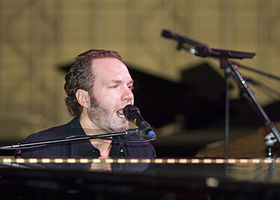Piano Sheets > Five For Fighting Sheet Music > 100 Years (ver. 1) Piano Sheet
100 Years (ver. 1) by Five For Fighting - Piano Sheets and Free Sheet Music

About the Song
Other avaliable versions of this music sheet: Version 1 Version 2 Version 3 Version 4 Version 6
"100 Years" is the first single from the album The Battle for Everything released by Five for Fighting (John Ondrasik) in 2004.
The song is about a man who is 99 years old, about to turn 100. He looks back at his life to see whether he really "lived" it or not. The song's main theme is to never take life for granted, and all of the time we have on Earth is right now, so we should make the most of it. Five for Fighting is the stage name of American singer-songwriter John Ondrasik. His 2000 album America Town went platinum in the U.S. largely due to the success of the song -Superman (It-s Not Easy)- following the September 11 attacks in 2001.The 2004 album The Battle for Everything has also enjoyed chart success in the United States. Ondrasik has also released a DualDisc of his 2004 album which has one side containing The Battle for Everything in its entirety and the other side being a DVD.
Download this sheet!
About the Artist

Random article
Everything about piano sheet music Sheet music has a history of its own, dating back to the 19th century. In those days, musicians would play classic compositions using sheet music piano. Later on, when bands started performing, music sheets were back in vogue as a means to recreate these old compositions.
What is it?
Sheet music is nothing but a written notation of the piano notes. Depending on what musical composition the sheet music is for, the musical notes written will also differ. Most people have a wrong notion that it is only the popular compositions, which have recorded onto sheet music piano. However, several unfamiliar compositions have also been recorded using sheet music.
(More...)
